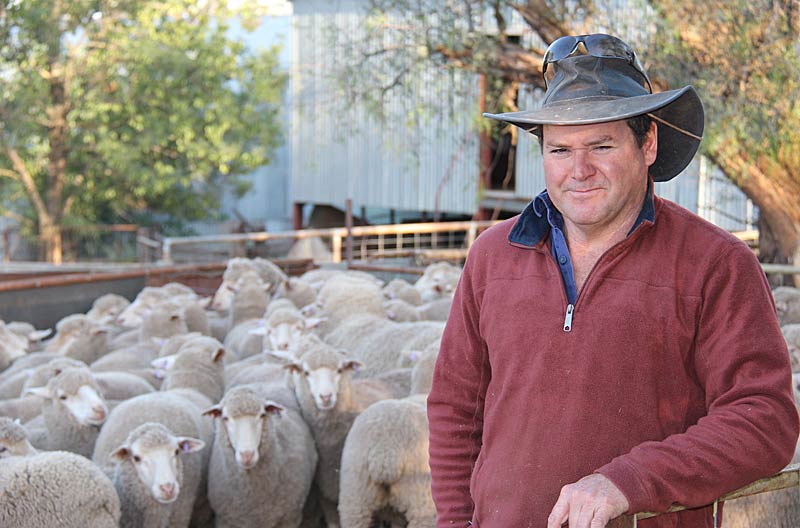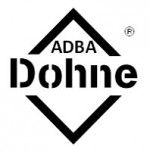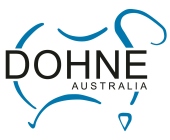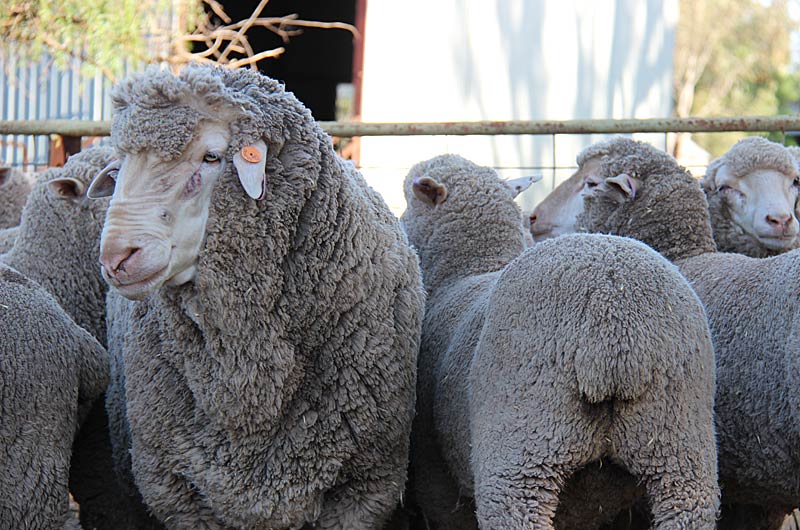Backcrossing argument carries no weight
November 6, 2013
By Kim Woods
Sheep producers backcrossing away from the Dohne breed to Poll Merinos with the
perception of improving wool quality have been urged to consider their gross margins.
Australian Dohne Breeders Association vice-president John Nadin said the backcrossing
trend emerging from this year’s spring ram sales was a matter of growers and agents
misunderstanding the breed’s role in the Australian sheep industry.

Richard Koschitzke has increased his wool value, surplus ewe sales and turns lambs off earlier by introducing Dohnes.
Mr Nadin said the profit drivers of fertility, lamb growth rates, increased surplus sheep
sales and carrying capacity were being overlooked in the pursuit of increased fleece
weight.
“We have got a few in the industry trying to turn the Dohne into a Merino and that’s not
its role,’’ he said.
“The Dohne is a strain of Merino, just like the Peppin, Saxon and Spanish – they all have
a place.
“We are continually striving to increase the wool cut without sacrificing the doing
ability, growth rates, carcass attributes and fertility.’’
Mr Nadin said the increased weaning percentage and less dry ewes put the Dohne on
par with Merinos in terms of wool cut, and streets ahead on carcass value, growth rates
and doing ability.
“What is hard to measure is the Dohne’s doing ability, ease of management, ability to
finish quickly, perform and grow into a productive animal after a hard start,’’ he said.
Australian WoolNetwork senior wool and sheep specialist Michael Crooks confirmed
instances of backcrossing among commercial producers in his territory of south-eastern
South Australia.
Mr Crooks, of Portland, said Dohne ram selection had improved in recent years resulting
in increased wool quality, coupled with higher conception and lambing rates.
He said the biggest gains had been for crossbred prime lamb flocks using Dohne rams,
with wool clip value jumping from $600 to $1000 a bale on average.
“A lot of the Dohnes are now down to 19 micron and are putting more meat onto the
frame of sheep,’’ Mr Crooks said.
South African sheep and wool consultant Cameron McMaster said inferior wool quality
and style in the Dohne breed was a myth.
Mr McMaster said the foundation flock had been based on careful selection for fertility,
meat and Merino wool traits.
He has branded the backcrossing trend as a “retrogressive step’’, saying South African
woolgrowers had trod the same path with negative consequences.
Mr McMaster said the producers rapidly lost much of the gain they had made in terms of
reproduction and growth rate.
“The sheep from this backcross were of a mixed type, wrinkly and less vigorous,’’ he
said.
“It makes no economic sense to gain a few grams of fleece weight a generation ahead but
immediately lose many kilograms of lamb weight in the process.’’
Southern NSW mixed farmers Richard and Lesley Koschitzke switched from first-cross
ewes to a self-replacing Dohne flock three years ago.
Mr Koschitzke, of Brocklesby, is impressed with the robustness of the Dohne ewe, and
he has doubled the income from his wool clip.
His 10-month-old Dohne ewe lambs cut 3.5kg of 19.6 micron wool with a length of
82mm, staple strength of 31Newtons/kilotex and value of $22.56 a head.
This year, Mr Koschitzke grainfed 90 F3 Dohne wether lambs and cull ewes from 16 to
22kg carcass weight, selling them through the saleyards for $90 ($8 skin value). The
lambs had cut 3.5kg of wool valued at $22.
He sold dry cast-for-age ewes for $90.
“The Dohne ewe offers me many more options, with the gross margins greater than
cropping in the drier seasons,’’ Mr Koschitzke said.
Dohnes are proving their salt in carcass competitions around the nation this year.
In October, a Charollais-Dohne cross lamb won the hoof and hook in the 2013 Welington
Springfest Prime Lamb competition, with a liveweight of 55kg, carcass weight of 26.6kg
and dressing percentage of 54.1.
In the same month, purebred Dohne wether lambs scored equal first carcass honours
alongside Poll Dorset cross lambs in the Rutherglen Lamb Expo feedback trial.
Tasmanian mixed farmer Richard and Sarah Johnston scored back to back wins with
Dohne-Merino-Poll Dorset cross lambs at the Campbell Town Show’s Prime Lamb
Paddock to Plate.
The lambs averaged 56kg liveweight, had a carcass weight of 26.8kg and dressing
percentage of 49.
Mr Johnston, who runs 1700 Merino ewes in a 650mm rainfall zone, turned to Dohne
rams to broaden his market options.
He said the Dohne infusion had lifted lambing rates by 10-15 per cent and carcass
weights by 1kg, enabling light trade lambs to be turned off at 22kg.
“Our Dohne-Merino cross lambs average 17 micron at six months of age and our flock
average remains at 18.5-19 micron – and we can turn the lambs off a month earlier.’’












